

Cologne Cathedral
Photos taken April 2007

interior
Cologne Cathedral (German: Kölner
Dom, officially Hohe Domkirche St. Peter und Maria) is one of the best-known
architectural monuments in Germany and has been Cologne's most famous landmark
since its completion in the late nineteenth century. The cathedral is under the
administration of the Roman Catholic Church and is the seat of the Archbishop of
Cologne. It is the church with the largest facade (the west or main facade with
the twin towers) and remains the second-tallest Gothic structure in the world;
only the steeple of the Ulm Cathedral is higher.

Construction of the Gothic church began in 1248 and took, with interruptions,
until 1880 to complete – a period of over six hundred years. It is 144 metres
long, 86 m wide and its two towers are 157 m tall. The cathedral is dedicated to
Saints Peter and Mary.
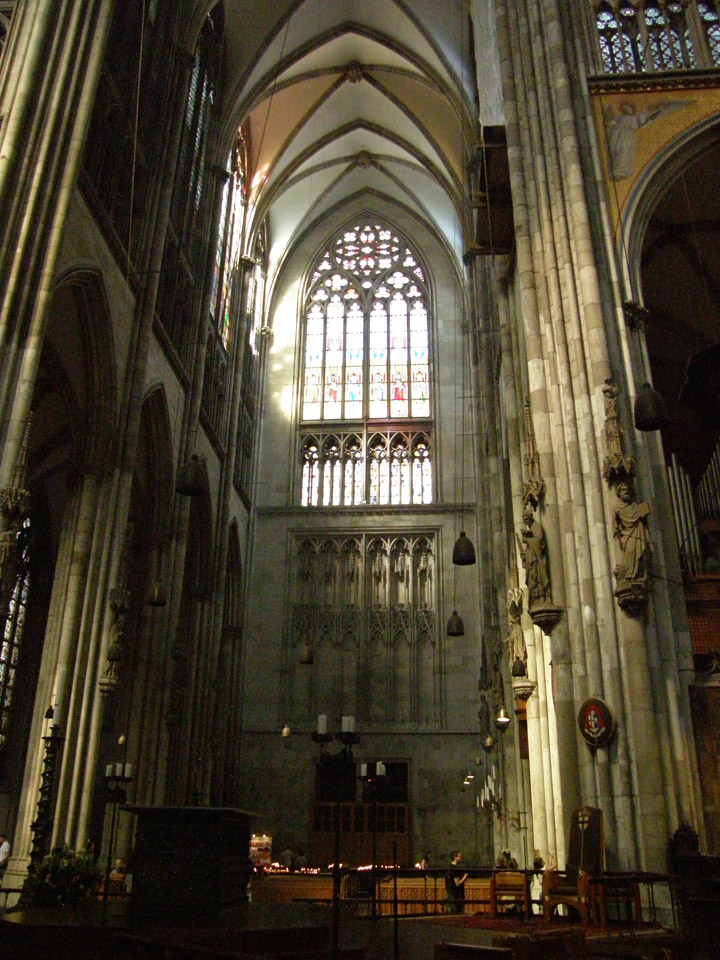
It was built on the site of a fourth-century Roman temple, a square edifice
known as the "oldest cathedral" and commissioned by Maternus, the first
Christian bishop of Cologne. A second church built on the site, the so-called
"Old Cathedral", was completed in 818. This burned down on April 30, 1248.
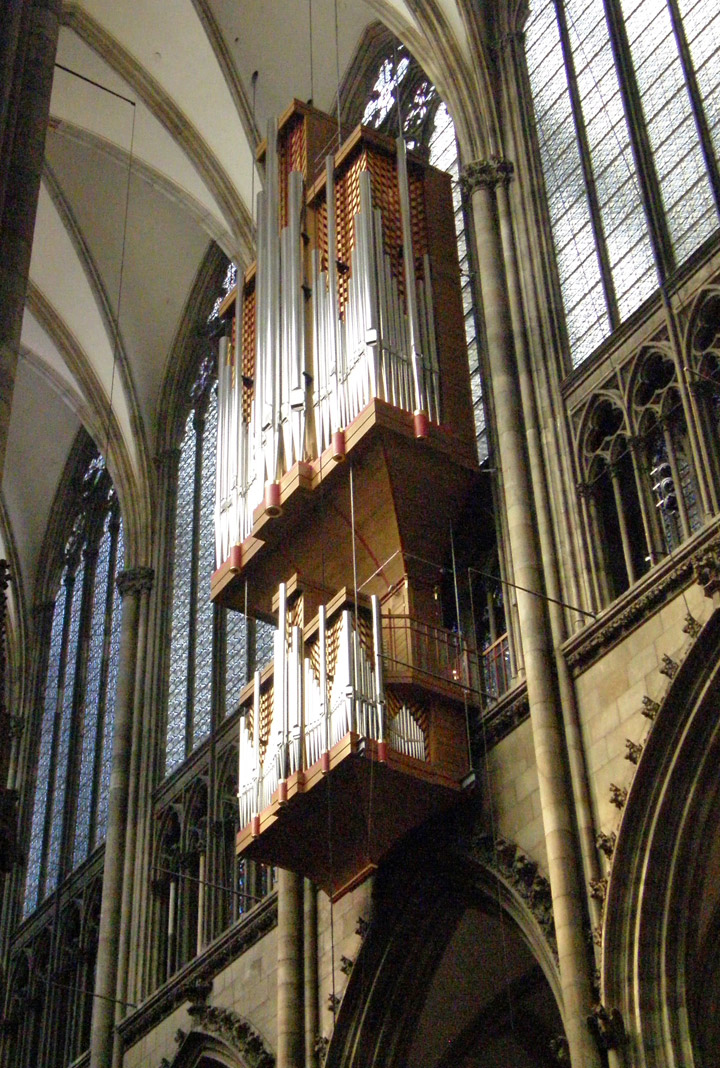
organ console
The present cathedral was built to
house the relics of the Magi, taken from Milan in Italy by the Holy Roman
Emperor Frederick Barbarossa and given to the Archbishop of Cologne, Rainald of
Dassel in 1164. The foundation stone was laid on August 15, 1248, by Archbishop
Konrad von Hochstaden. The choir was consecrated in 1322. After this initial
rapid progress, construction work gradually came to a standstill, and by the
year 1560 only a torso had been built. Work did not resume until 1842, during
the nineteenth century romantic enthusiasm for the Middle Ages and with the
commitment of the Prussian Court. The towers were added along with other
substantial parts of the cathedral, mostly according to surviving medieval plans
and drawings. The cathedral was built by civic effort; the Central-Dombauverein,
founded in 1842, raised two thirds of the enormous costs (over US$ 1 billion in
today's money), while the Prussian state supplied the remaining third.
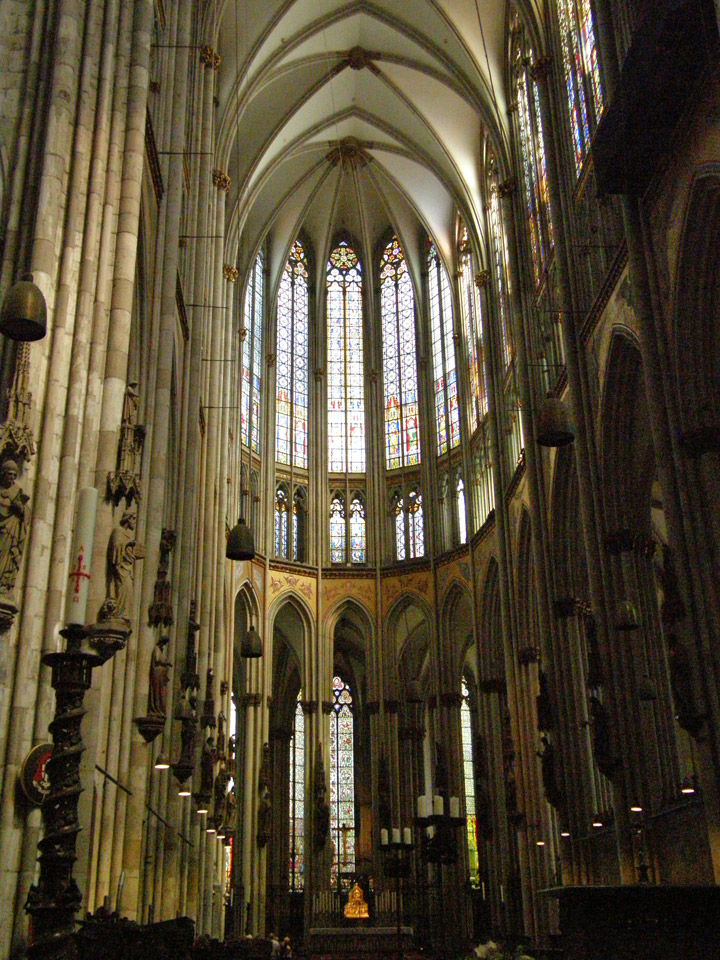
The completion of Germany's largest cathedral was celebrated as a national event
in 1880, 632 years after construction had begun. The celebration was attended by
Emperor Wilhelm I. Although its outer appearance remained faithful to the
original medieval plans, the roof was a modern steel construction. At its
completion, the cathedral was the world's tallest building, having surpassed the
Straßburger Münster. It lost the title four years later, in 1884, to the
Washington Monument.
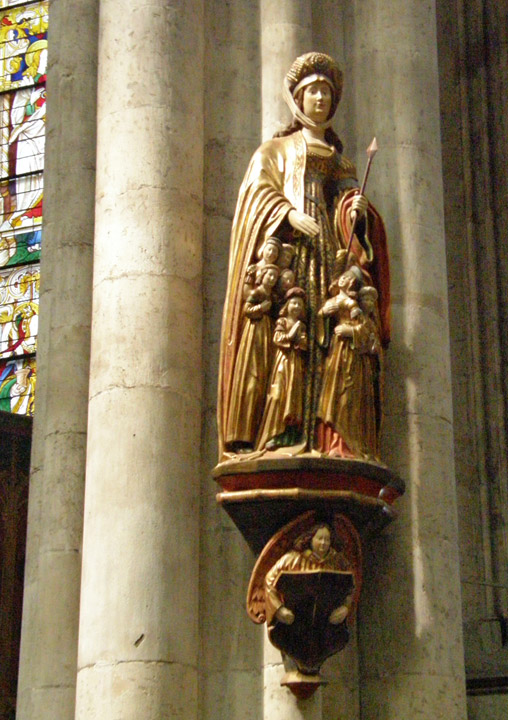
The cathedral has twelve church bells. The first was the 3.4-ton
Dreikönigenglocke ("Bell of the Three Kings"), cast in 1418, installed in 1437,
and recast in 1880. Two of the other bells, the Pretiosa (10 tons; at that time
the largest bell in the Occident) and the Speciosa (4.3 tons) were installed in
1448 and remain in place today. The largest bell, the 24-ton St. Petersglocke
("Bell of St. Peter"), was cast in 1922 and is the largest free-swinging bell in
the world. (The World Peace Bell in Newport, Kentucky is larger, but turns
around its center of gravity rather than swinging about its top.)
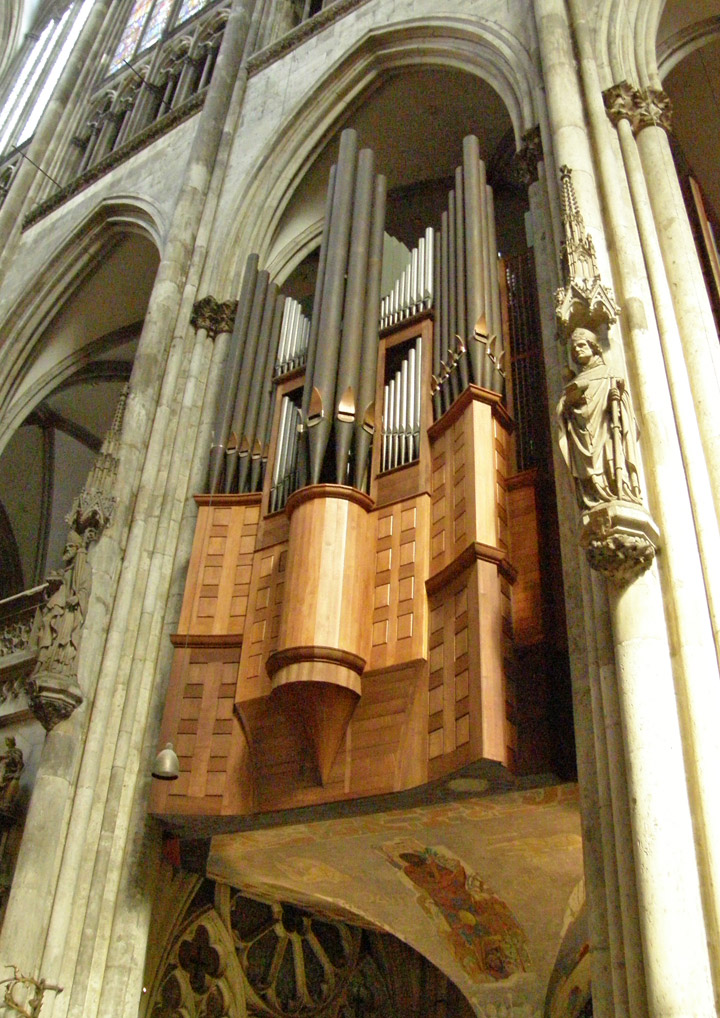
organ
The most celebrated work of art in
the cathedral is the Sarcophagus of the Magi, a large gilded sarcophagus dating
from the thirteenth century, and the largest reliquary in the Western world. It
is thought to hold the remains of the Three Wise Men, whose bones and 2000-year
old clothes were discovered at the opening of the shrine in 1864.
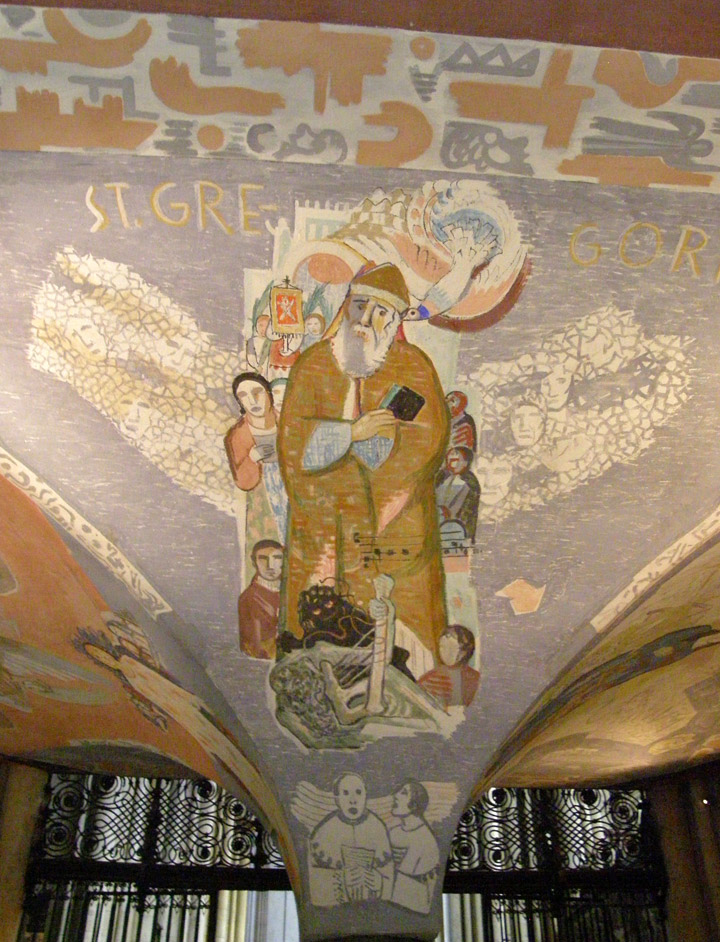
The Gero Cross (Gero-Kreuz) , found near the sacristy and dating from around
970, is the oldest large cross north of the Alps. In the Sacrament Chapel, the
Mailänder Madonna ("Milan Madonna"), dating from around 1290, is a wooden
sculpture depicting Mary and the child Jesus. The altar of the patron saints of
Cologne with an altar piece by Stephan Lochner resides in the Marienkapelle
("St. Mary's Chapel"). Other outstanding works of art are to be found in the
cathedral treasure chamber.
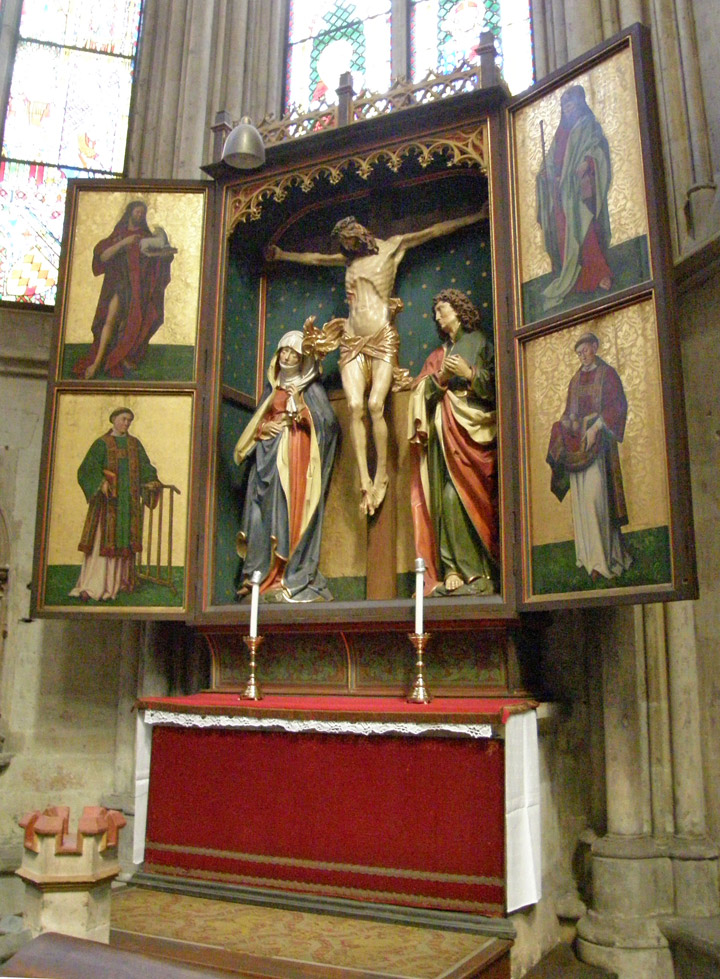
The cathedral suffered fourteen hits by aerial bombs during World War II but did
not collapse; reconstruction was completed in 1956. In the northwest tower's
base, an emergency repair carried out with bad-quality brickstones taken from a
nearby war ruin remained visible until the late 1990s as a reminder of the War,
but then it was decided to reconstruct this section according to the original
appearance.
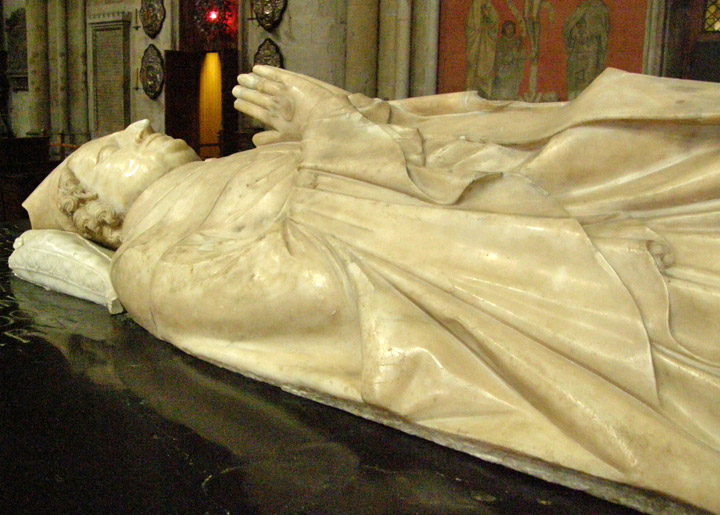
It is possible to climb a spiral staircase to a viewing platform about 98 metres
above the ground. This climb covers 509 steps (see gallery below).
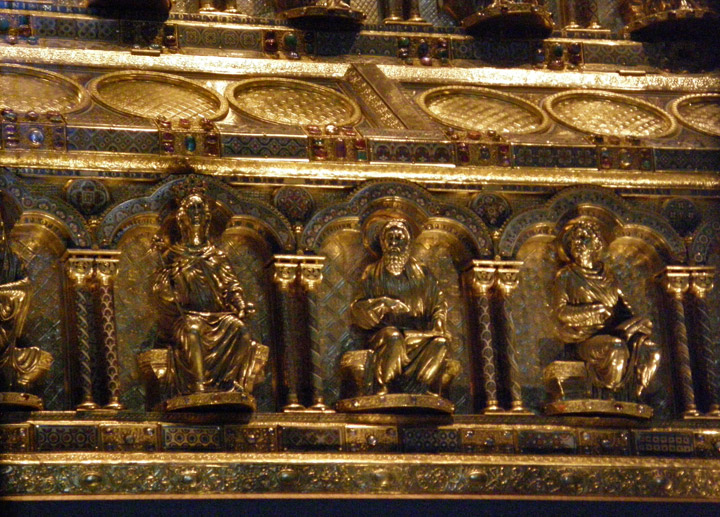
Shrine of archbishop Engelbert
Some repair and maintenance work is almost constantly being carried out in some section of the building, which is almost never completely free of scaffolding, since wind, rain, and pollution slowly eat away at the stones. The Dombauhütte, which was established to build the cathedral and repair the cathedral, is said to employ the best stonemasons of the Rhineland. There is a common joke in Cologne that the leader of the Dombauhütte, the Dombaumeister (master builder of the cathedral), has to be Catholic and free from giddiness. The current Dombaumeisterin is Barbara Schock-Werner. Half of the costs of repair and maintenance are still borne by the Dombauverein.
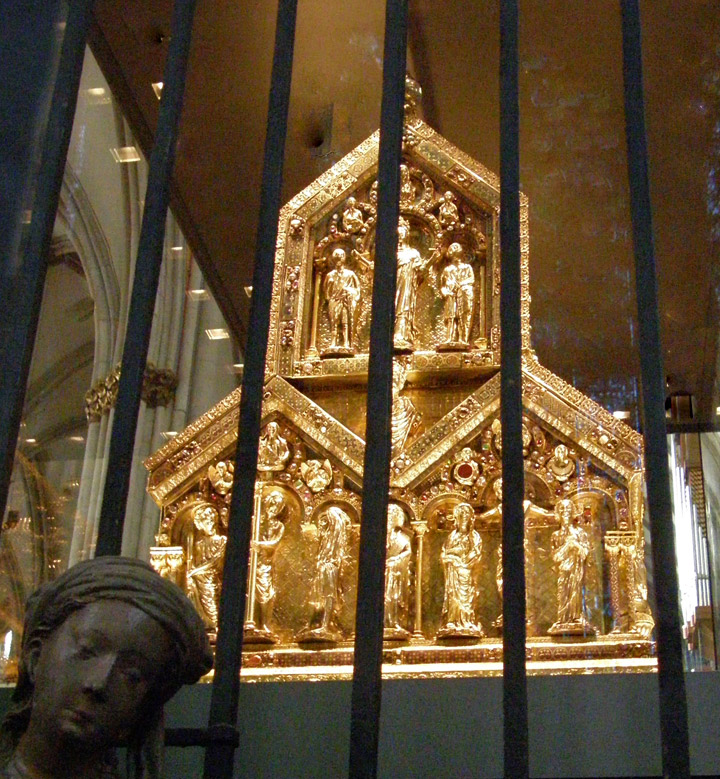
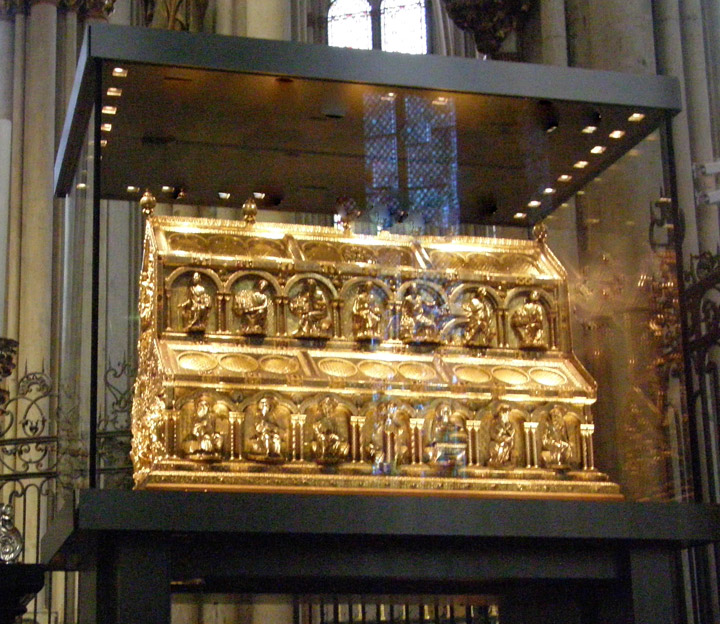
Shrine of archbishop Engelbert
In 1996, the cathedral was added to
the UNESCO World Heritage List of culturally important sites. However, in 2004
it was placed on the "World Heritage in Danger" list due to nearby high-rise
building and its visual impact upon the site, as the only Western site in
danger. The cathedral was removed from the List of In Danger Sites in 2006,
following the authorities' decision to limit the heights of buildings
constructed near and around the cathedral.
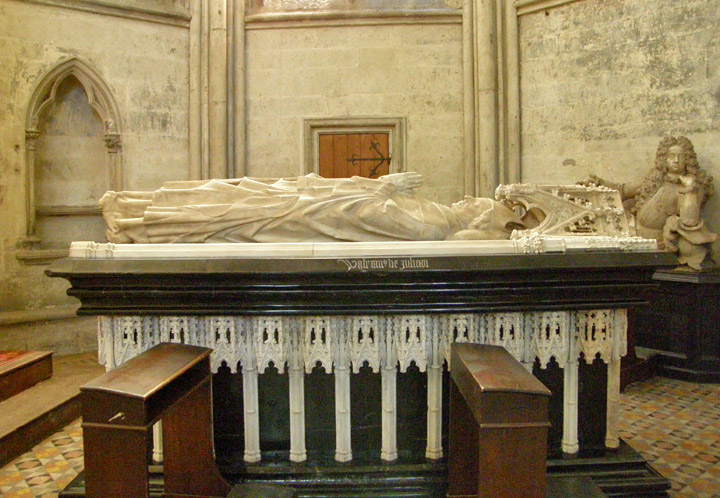
On August 18, 2005, Pope Benedict XVI visited the cathedral as part of his
apostolic visit to Germany as part of World Youth Day 2005 festivities. An
estimated 1 million pilgrims visited the cathedral during this time.
Text from Wikipedia
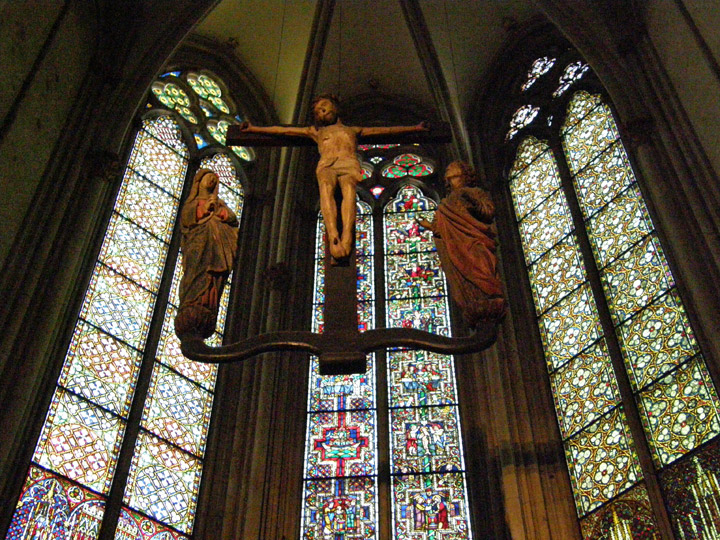
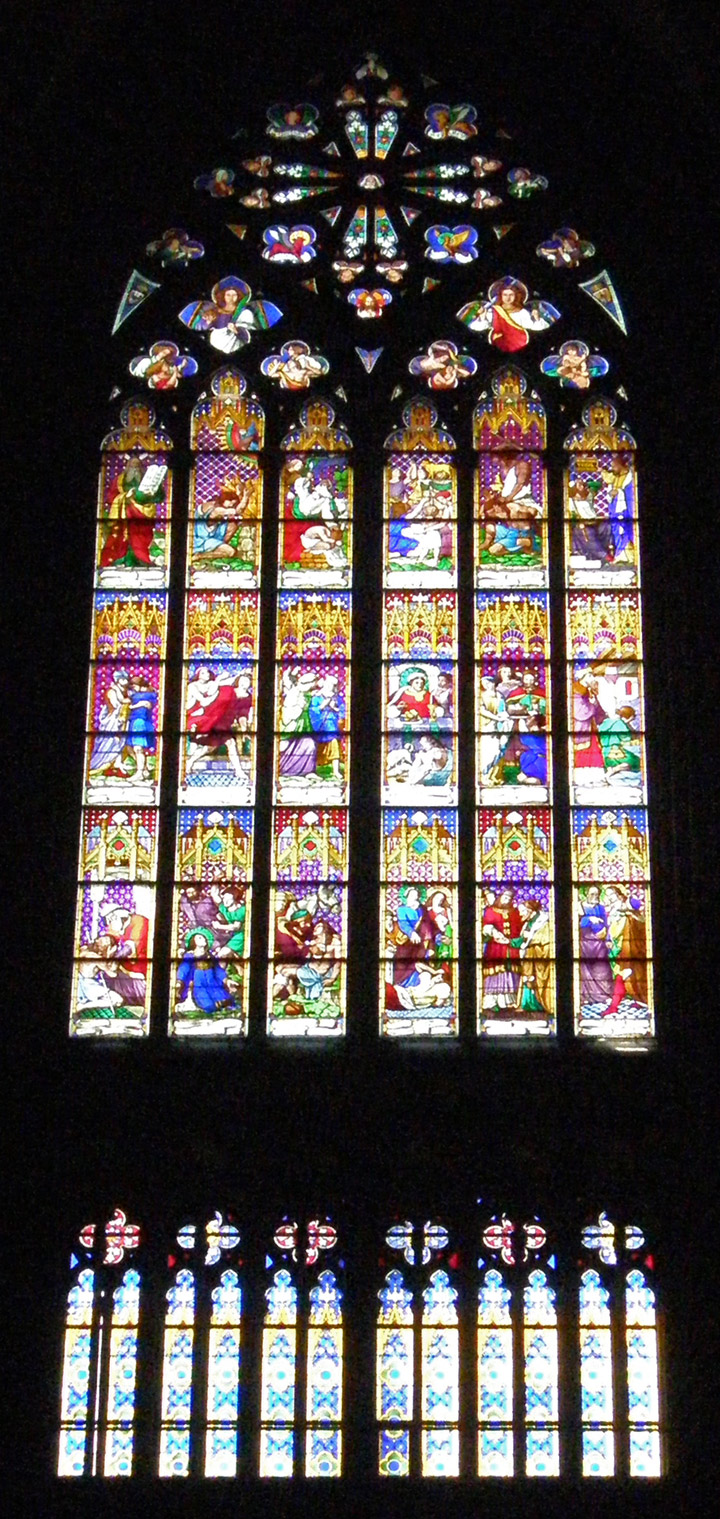
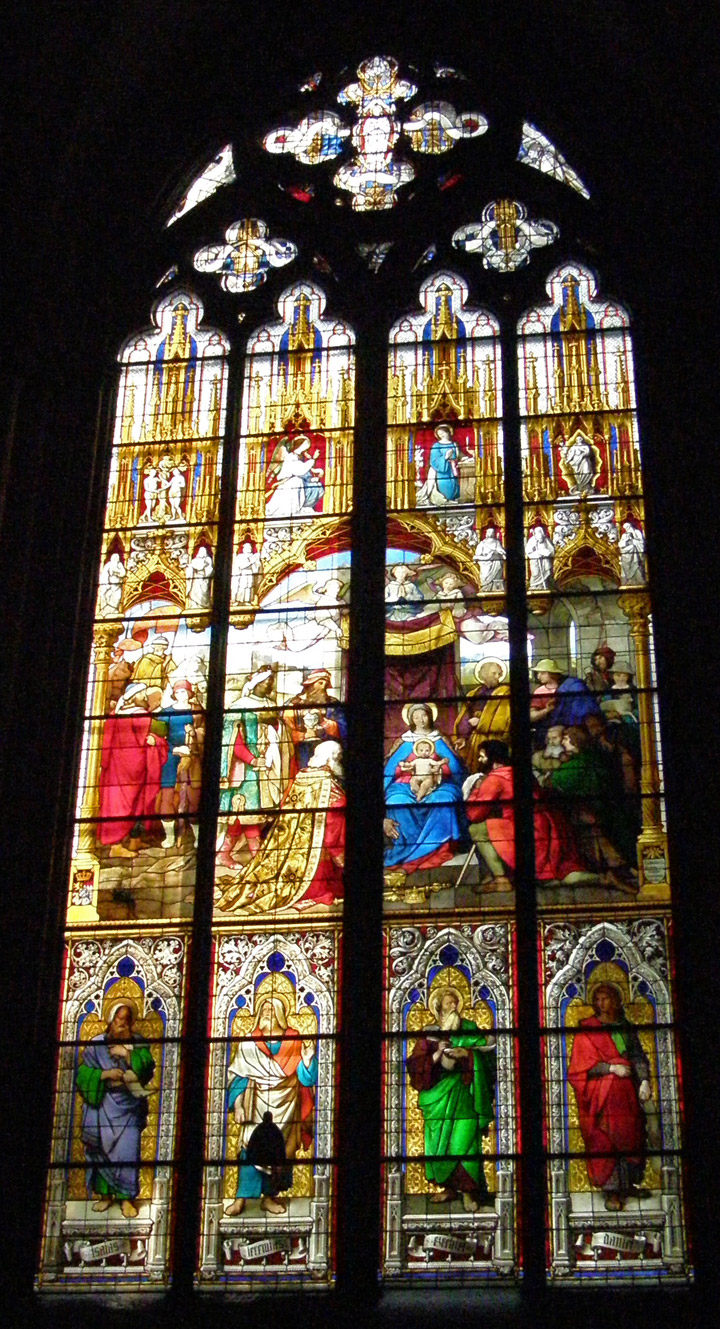
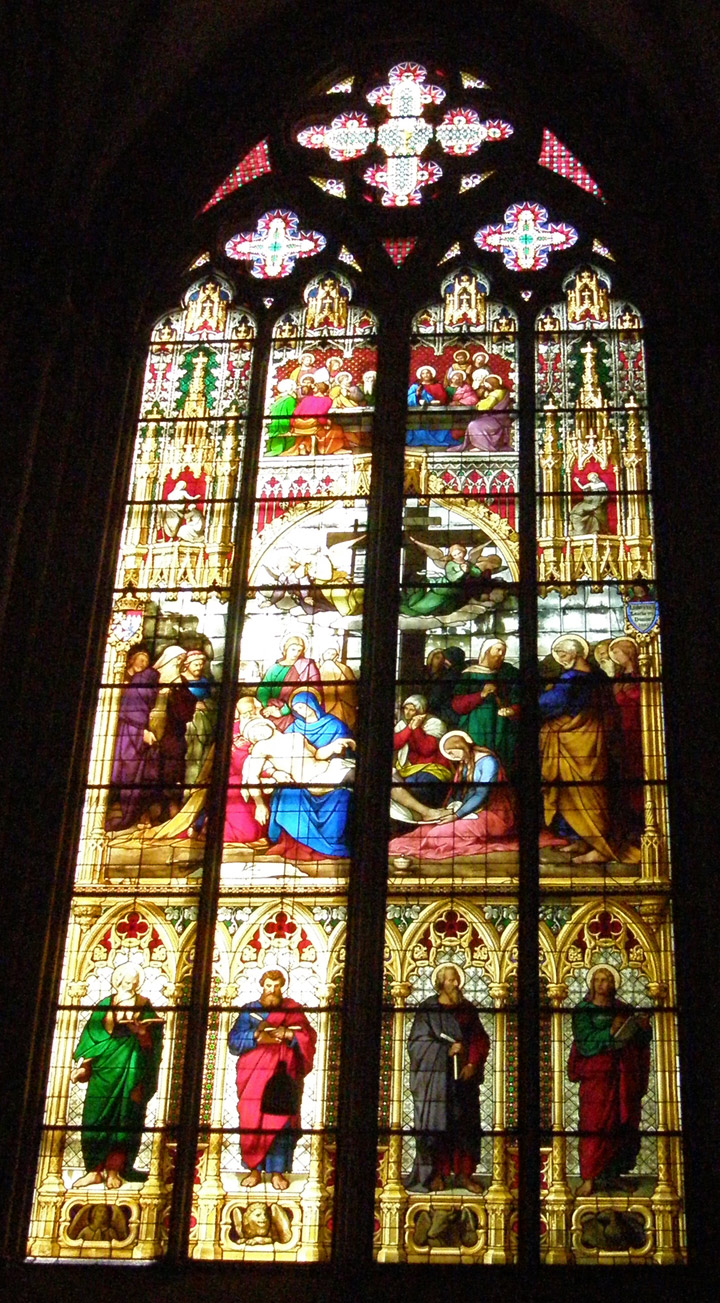
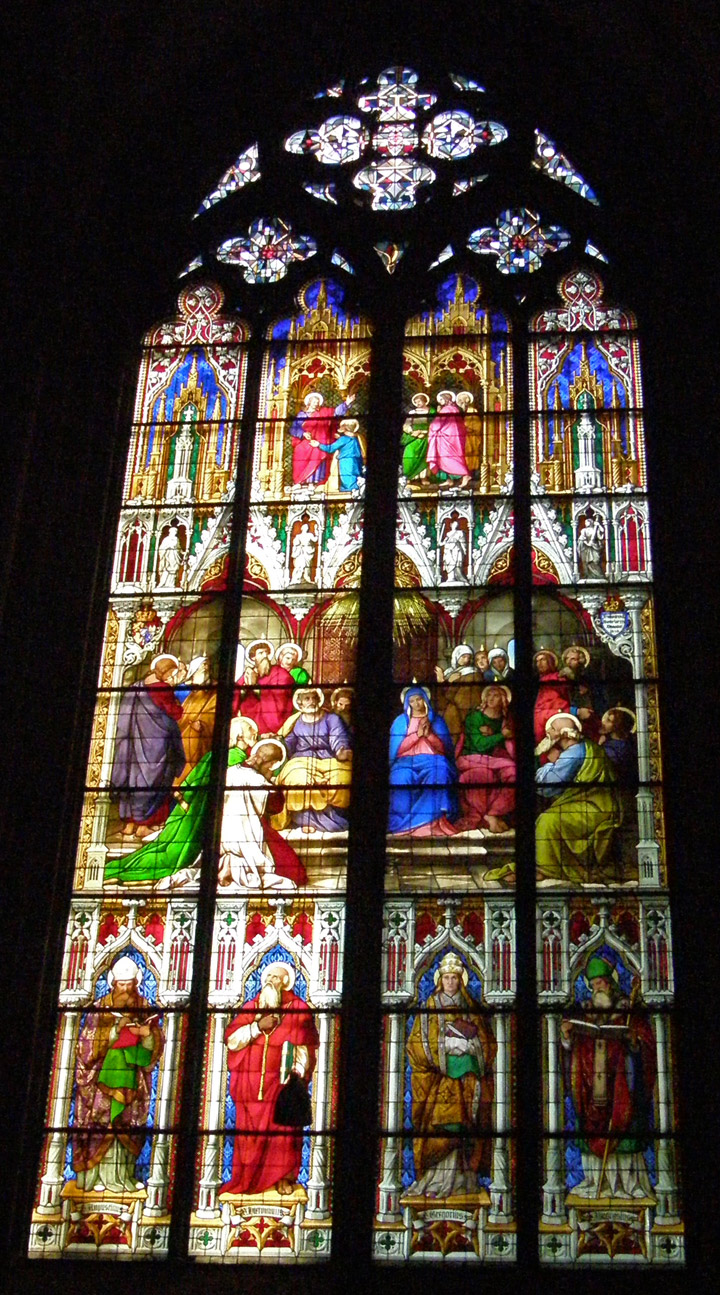
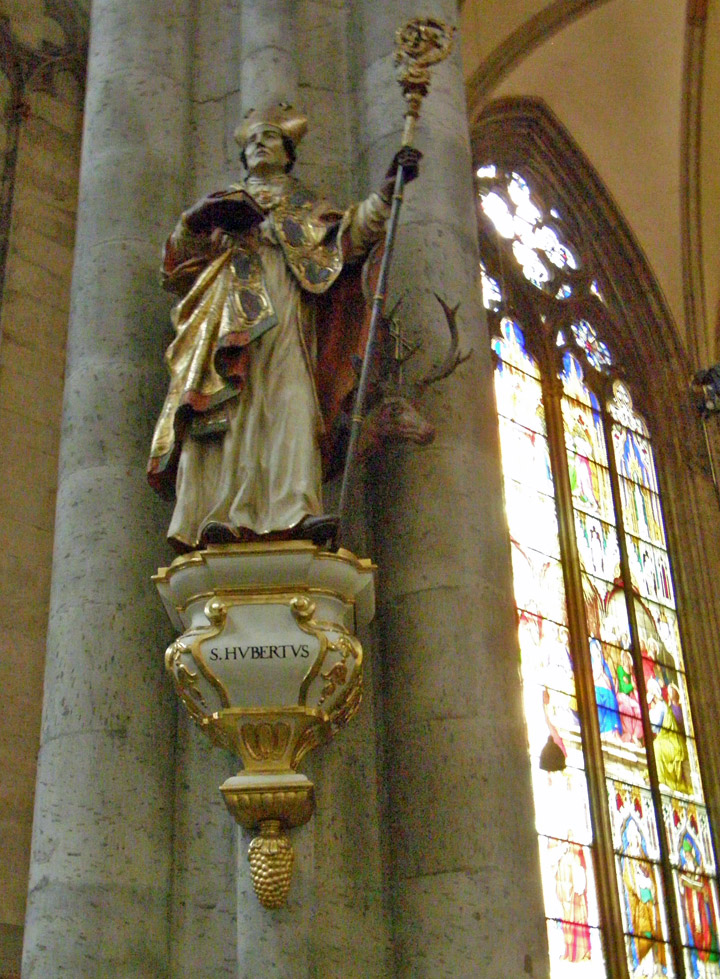
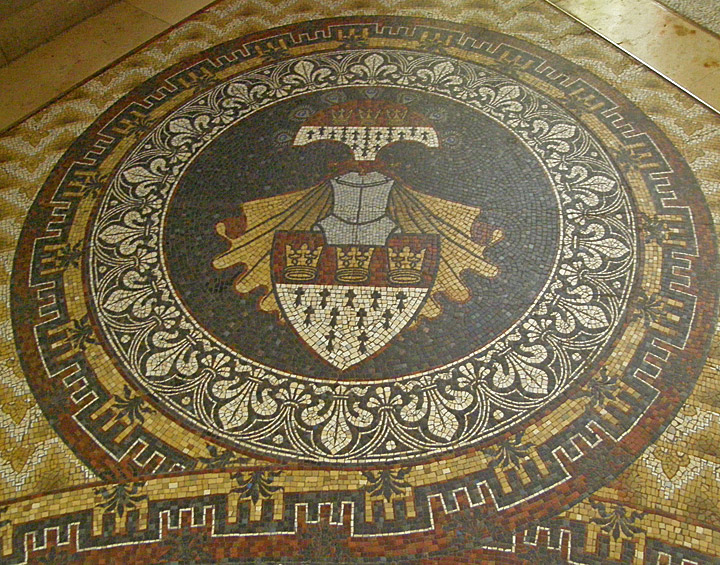
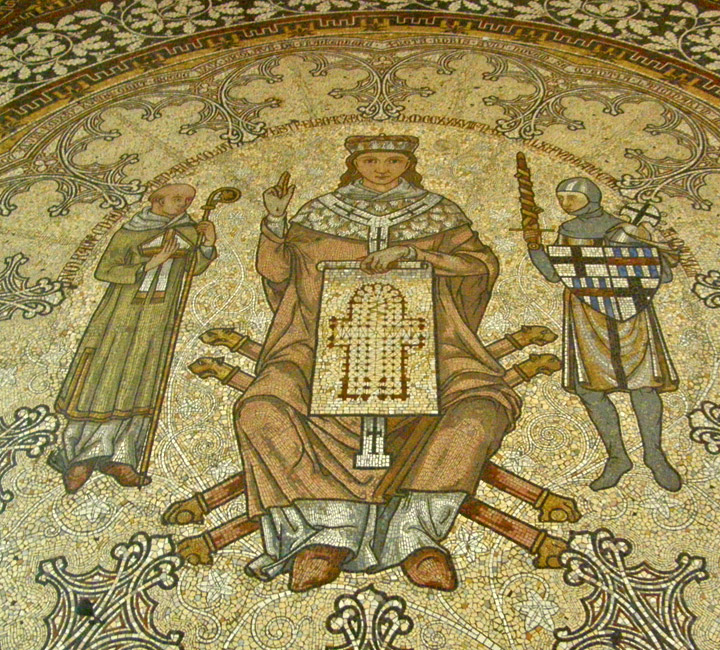
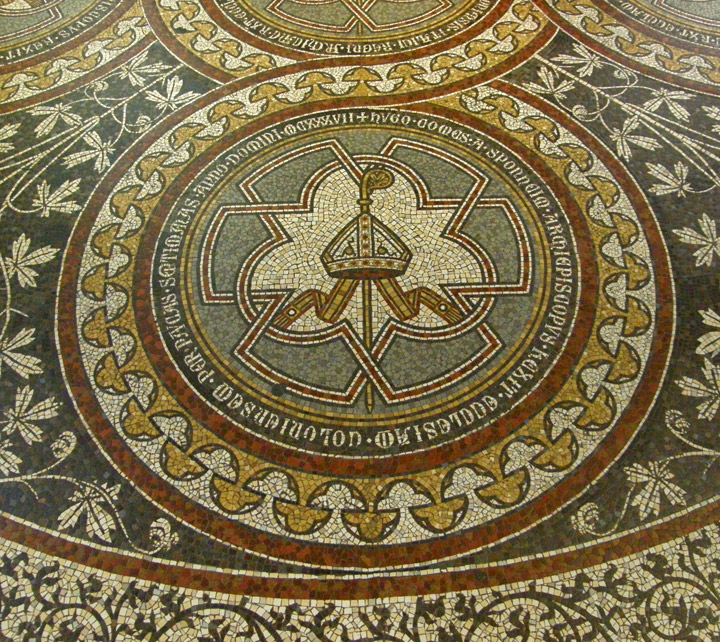
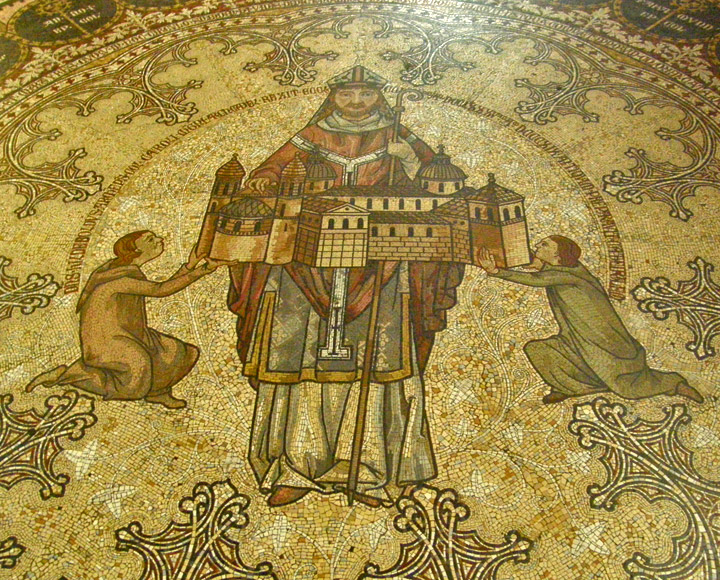
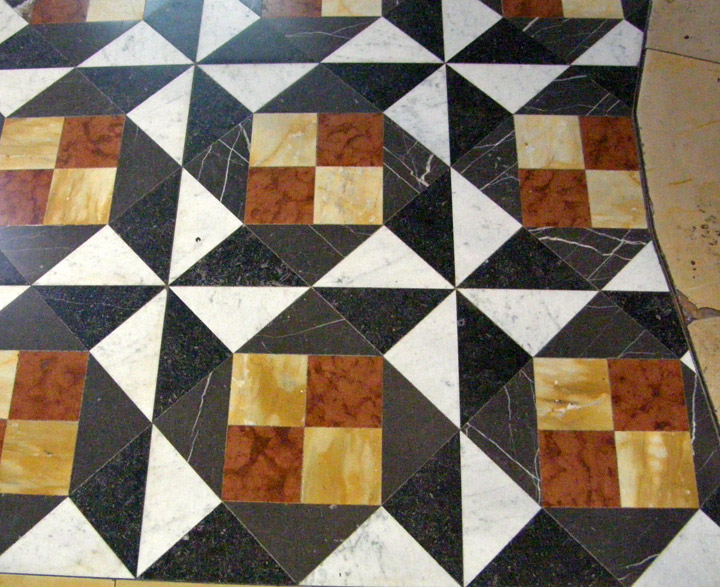
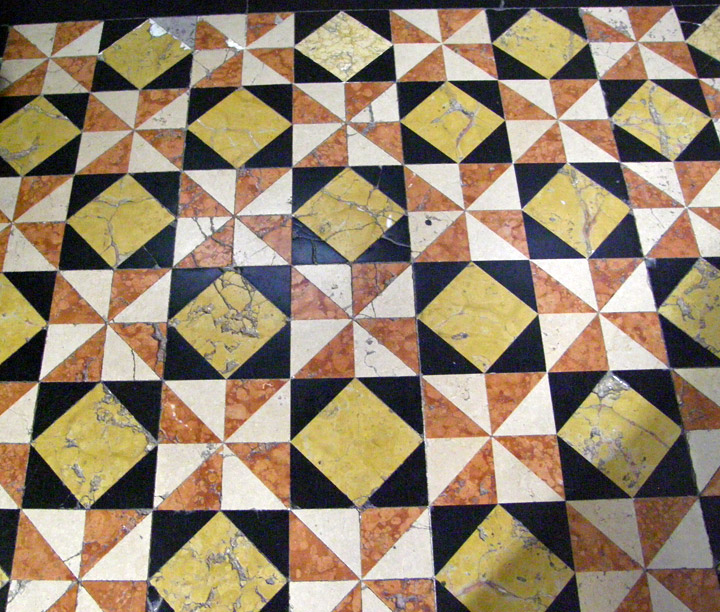
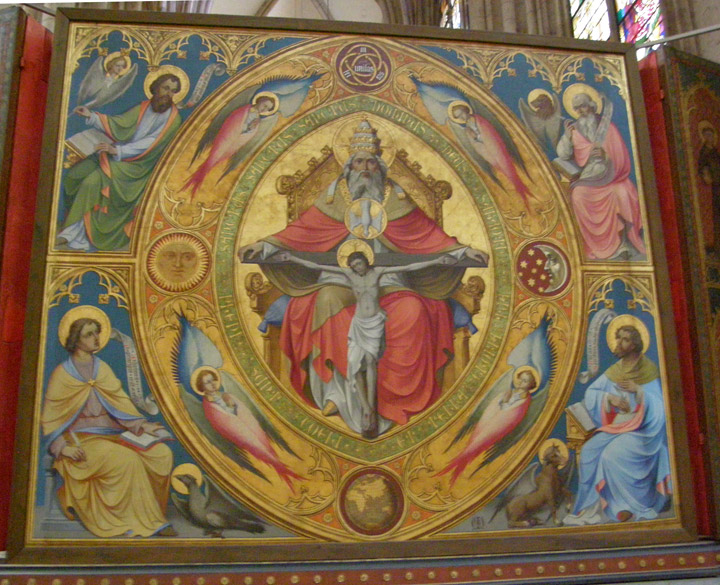
altar painting